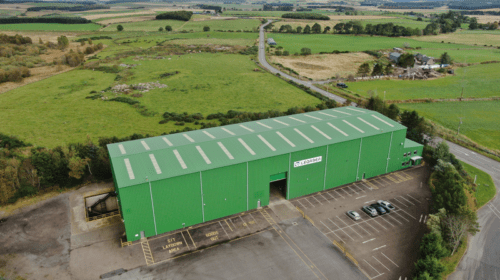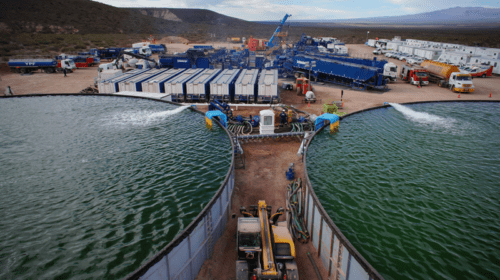COVID-19 had a significant impact on several industries in the U.S., with many businesses facing hardships, such as financial loss. Small businesses (SMBs) were among the hardest hit, experiencing a combined $4.6 billion loss in monthly revenue in April 2020 alone, according to a report from Intuit QuickBooks. At the height of the pandemic in 2020, the financial health of SMBs had plummeted.
Now in 2021, we are moving past the pandemic, the economy is starting to rise again and businesses are looking to make a comeback from the prior year’s challenges. Data from Intuit QuickBooks has shown that SMBs in industries such as finance and agriculture have made significant growth following the worst of the pandemic. Even some of the hardest hit industries have begun to make a recovery. So, what does this mean for SMBs in the oil and gas industry? Luke Voiles, VP and GM of QuickBooks Capital at Intuit, provides insight on the current status of the oil and gas industry, how oil and gas SMBs are recovering in comparison to other SMBs, and what SMBs should do going forward to maintain business growth.
As reported in the Intuit QuickBooks report, the oil and gas industry was among the hardest hit, seeing a decreased revenue of over 20 percent – the equivalent of more than $80,000 per business. Voiles explains that, although oil and gas were deemed an essential industry, oil prices dropped significantly during the pandemic, which is a normal result of a downturn. “If we go back to February 2020, before the pandemic was officially declared, I don’t think anyone could have predicted the worldwide lockdowns that followed. This stopped people from traveling and disrupted supply and demand for many goods and services, while increasing it for others.”
Although among the most affected, the oil and gas industry is making a steady recovery. According to Voiles, “Our data shows that the oil and gas industry is bouncing back as more businesses open up and people start to travel again, now that vaccine rollouts are underway. Monthly revenues for small businesses in the industry have generally been rising since the low point last summer, and many are close to their pre-pandemic levels again, which is good news.” However, even with this positive trend, SMBs may still be faced with challenges. Voiles suggests that one of the challenges may, in fact, be the increase in demand. “We will be watching the data from May and June very closely,” Voiles says.
In comparison with other industries, oil and gas are seeing great improvement. “The most recent data, which is through April 2021, shows that monthly revenues for small businesses in the oil and gas industry are at 90 percent of their pre-pandemic levels. That’s a significant recovery from the low point in July 2020, when monthly revenues were at 65 percent of their pre-pandemic levels,” Voiles explains. He provided additional data on the recovery of other industries that had been hard hit during the pandemic. Hotels, which had a 48 percent drop in monthly revenue in April 2020, were up by almost 12 percent in March 2021 compared to their pre-pandemic performance. Education – which was impacted even more than oil and gas in April 2020 – saw monthly revenues up by two percent in March 2021, compared to before the pandemic.
Now that the economy is open again, many SMBs are making a recovery and seeing increases in revenue. Should things go awry, and the economy shuts down again, businesses could find themselves in trouble. To overcome obstacles, such as closures and regulations, Voiles shares the importance of understanding your business’s cash flow.
“When times are tight, money and cash flow become a worry you can’t shake. Left unchecked, [they] can spiral out of control. To stabilize your cash flow, look for financial solutions that give you a faster way to get paid, an easier way to pay your bills, a simple way to access new sources of capital and the most complete way to see and control your cash flow into the future,” Voiles advises.
According to Voiles, cash reserves can be a useful financial option for business owners, especially in times of a pandemic. “The traditional advice of having three to six months of cash reserves seems like a relic from another time. Set a stretch goal of saving enough cash to sustain core operations for one year and build it into your business plan. Beyond properly managing your businesses cash flow, we recommend exploring digital technology solutions to help your business build resilience,” Voiles says. According to a study by Intuit QuickBooks, small businesses that invested in digital technology in 2020 performed better during the pandemic and felt more confident about the future.
Now that SMBs are well on the road to recovery, what are the next steps? Voiles suggests that small business owners and their employees take time to process everything that’s happened in this past year. “Think back on what did and didn’t work during this stressful time. Make sure you have a comprehensive business plan that can help you respond to unexpected circumstances,” Voiles says. He mentions that more than 1 in 10 prospective business owners do not intend to write a business plan, and yet 69 percent of people who own a small business say that’s a mistake. Business owners, both new and established, may benefit from writing a business plan.
Voiles also suggests that SMB owners focus on their financial plans. “If you run into unexpected circumstances in the future and need emergency support, will your finances be in order so you can quickly apply for relief? Now is also the time to make sure you aren’t overly dependent on one source of revenue. Diversify where you can and embrace technology to find new ways to reach customers,” Voiles counsels.
QuickBooks has also been lending its support to SMBs, who have had to quickly adjust the way they conduct business with little to no guidance, as a result of COVID-19. “We were one of the first brands to help small businesses by becoming an approved PPP lender, creating and sharing resources, and co-founding The Small Business Relief Initiative with GoFundMe. Through the CARES Act, QuickBooks Capital helped eligible customers access more than $1.2 billion in SBA-approved loans and Paycheck Protection Program (PPP) support last year,” Voiles shares.
Voiles and QuickBooks have been vocal in requesting the government do more for small businesses in the future, should a similar situation arise again. “We are working to expand access to the COVID-19 relief fund, guarantee government support for the smallest businesses and make it easier for small businesses to go digital. You can read more about this work in the “Why this matters” section of our Small Business Recovery Report,” says Voiles.
So, what does the future look like for SMBs and, in particular, SMBs in the oil and gas industry? With data showing the resilience of many SMBs, the road to recovery is strong. “While this recovery has been slower for some, most industries are now returning to their pre-pandemic levels,” says Voiles. Though the oil and gas industry has come a long way, Voiles mentions it is still lagging behind others, especially those that were most resilient to the pandemic, such as real estate and agriculture. “It’s important [that] we continue to monitor the data over the coming months and recognize that some businesses may still need more help.”
Tonae’ Hamilton has been a contributor and associate editor to the magazine for two years. She has been writing professionally for almost four years. In her free time, Tonae’ likes to spend time with her three pets, cook, and binge-watch Netflix shows. Tonae' has a Bachelor of Arts in Communication from McDaniel College.
Oil and gas operations are commonly found in remote locations far from company headquarters. Now, it's possible to monitor pump operations, collate and analyze seismic data, and track employees around the world from almost anywhere. Whether employees are in the office or in the field, the internet and related applications enable a greater multidirectional flow of information – and control – than ever before.












